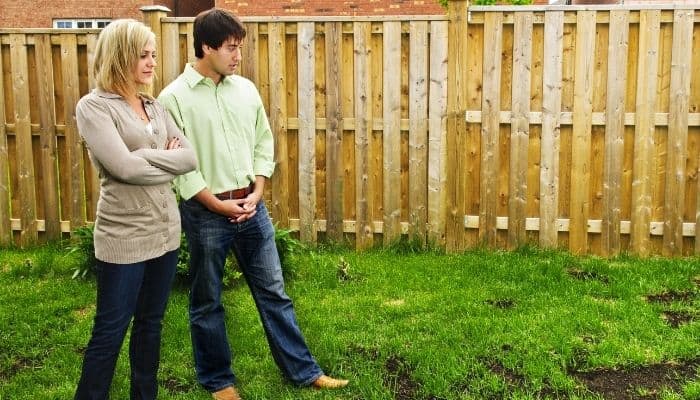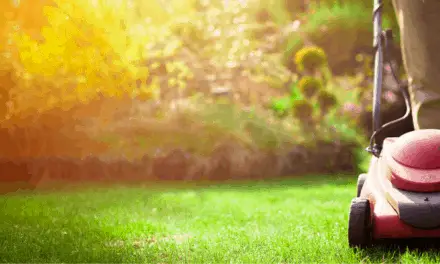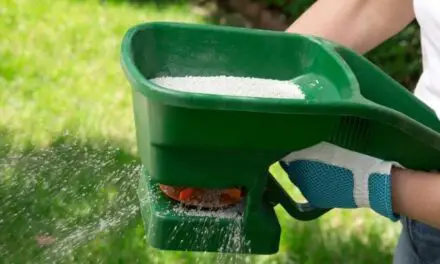If you take a little pride in your home, looking out the window at a patchy eyesore of a lawn is not the greatest of feelings.
And thinking about the time and effort it would take to repair it yourself may not make you feel much better.
But there is a chance that your existing grass could eventually do the job for you.
Table of Contents
Will Grass Eventually Fill In Bare Spots On Its Own?

Your grass should eventually fill in the bare spots on its own if it is a type of grass that contains runners. Runners are a way for grass to spread, continue growing, and fill in bare patches.
In the US, there are two types of grass that are most commonly used on residential properties:
- Kentucky bluegrass.
- Bermudagrass.
If your lawn is covered with either of these types of grass then your grass has the ability to fill in the bare spots on its own.
These two types of grass both have runners, which means that they have stolons above the ground and rhizomes underneath.
This means that the mother plant can generate other plants that will creep in and fill up those bare spots.
With proper lawn care and some time, the grass should fill in the bare patches on its own.
Some other types of grass that are able to fill in the gaps on their own are:
- St. Augustine.
- Centipede grass.
- Zoysia grass.
- Creeping red fescue.
If you don’t fancy waiting and would like to take action, you could reseed the bare patches yourself.
Also Read: Do Electric Lawn Mowers Use A Lot Of Electricity? (Explained)
What To Do If Your Existing Grass Is Not Filling In The Bare Spots
If your existing grass is refusing to fill in the bare spots, you’ll need to take some additional steps to get the job done.
Reseed The Bare Spots On Your Lawn
Rake your lawn really well and aerate it by prodding it all over with a large garden fork.
Mix together your grass seed with 1 part compost and 2 parts sand then sprinkle it all over the bare spots and water it well.
Mow the lawn at least once a week during the growing period.
Don’t cut the grass too short or it may result in lumps, bumps, and even more bare patches.
Sharpen your mower’s blade so that it cuts the grass properly and avoid walking on the reseeded spots.
Spread out grass clippings around the lawn to give it some additional nutrients.
You may need to repeat the process a few times but give it a few months first to see how the new grass is coming along.
You will eventually get there and have a full, lush, and even blonde
Will Grass Seed Grow If I Just Throw It Down?
Yes, some of the seeds will grow because grass plants are wind-pollinated and this is actually how grass reproduces and grows in the wild.
Wind naturally blows seeds from grass flowers and randomly scatters them around on the surface of the ground.
Some of the seeds survive to grow new grass plants.
So, if you spread grass seed around on soil, some of the seeds will land in a spot that will promote their growth while some will not.
However, this will result in very patchy grass growth and not a lush and even lawn.
To have a much better chance of growing a thick and even lawn, you would need to first aerate the ground by prodding all over with a fork.
Then by spreading a mixture of sand, compost, and grass seed over the area, a much higher percentage of the seed will grow.
Does Leaving Grass Clippings On The Lawn Help Grass Grow?
If you want to speed up the growing process of your grass, then leaving the grass clipping around those bare spots after you’ve cut the grass is a great way to encourage growth.
While it might feel natural to clean up those clippings after you mow, you should actually leave them on the ground.
How Does Grass Clippings Help Grass Grow?
When grass clippings are left on the ground they are able to release nearly 30% of your lawn’s required nutrients.
That’s a major boost for growth.
If you have bare spots on your lawn, then the extra clippings will help provide the new grass the nutrients it needs to grow healthy and quicker.
Related Article: Can I Put Soapy Water On My Lawn?
Will Grass Thicken On Its Own?
Yes, grass can actually thicken on its own if it’s mowed frequently.
When you mow the grass often it spreads the clippings out, giving them a chance to nourish bare spots and existing grass, making it thicker.
Many people mow to make sure their yard is clean-cut and looking good, but mowing can also make the grass healthier.
While it’s important to mow frequently, you also don’t want to overdo it or you may end up with an unhealthy yard.
The last thing you want is more bare patches and bumps when you’re trying to restore your grass.
For this purpose, always allow your grass to grow to at least 2 inches before mowing it again.
Don’t allow the grass to get too tall if you want to fill in those bare patches because tall grass can get clumpy and doesn’t spread out as well.
Final Thoughts
If you live in the US, then you likely live on a property that has a variety of grass that contains runners.
This type of grass will eventually fill in bare spots on its own.
With proper lawn maintenance, new grass seed should spread to the bare patches over time and result in a thick and even lawn.
And if that doesn’t seem to be happening, you can always speed things up by reseeding the bare spots.




